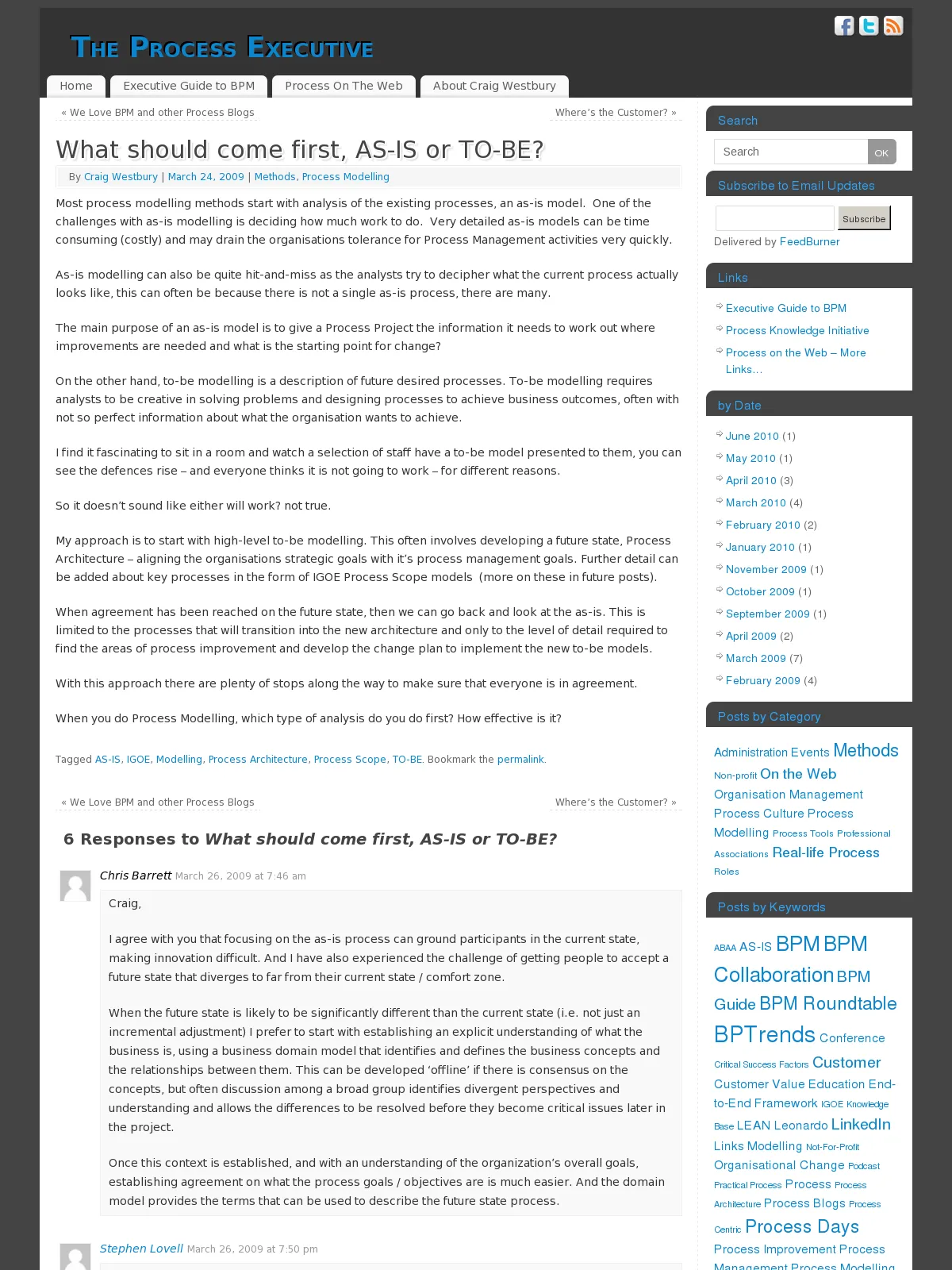What should come first, AS-IS or TO-BE?
Most process modelling methods start with analysis of the existing processes, an as-is model. One of the challenges with as-is modelling is deciding how much work to do. Very detailed as-is models can be time consuming (costly) and may drain the organisations tolerance for Process Management activities very quickly.
As-is modelling can also be quite hit-and-miss as the analysts try to decipher what the current process actually looks like, this can often be because there is not a single as-is process, there are many.
The main purpose of an as-is model is to give a Process Project the information it needs to work out where improvements are needed and what is the starting point for change?
On the other hand, to-be modelling is a description of future desired processes. To-be modelling requires analysts to be creative in solving problems and designing processes to achieve business outcomes, often with not so perfect information about what the organisation wants to achieve.
I find it fascinating to sit in a room and watch a selection of staff have a to-be model presented to them, you can see the defences rise – and everyone thinks it is not going to work – for different reasons.
So it doesn’t sound like either will work? not true.
My approach is to start with high-level to-be modelling. This often involves developing a future state, Process Architecture – aligning the organisations strategic goals with it’s process management goals. Further detail can be added about key processes in the form of IGOE Process Scope models (more on these in future posts).
When agreement has been reached on the future state, then we can go back and look at the as-is. This is limited to the processes that will transition into the new architecture and only to the level of detail required to find the areas of process improvement and develop the change plan to implement the new to-be models.
With this approach there are plenty of stops along the way to make sure that everyone is in agreement.
When you do Process Modelling, which type of analysis do you do first? How effective is it?
